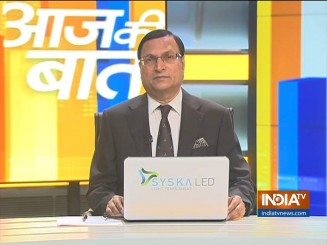 The UP government led by Chief Minister Yogi Adityanath has embarked upon a gigantic task of demolishing more than 40,000 religious shrines like temples, mosques and mazaars(tombs) built illegally on government land. This follows an order from the Lucknow bench of Allahabad High Court dated June 3, 2016, in which the state government was asked to remove or shift these illegal shrines that were built by encroaching on public property after January 1, 2011.
The UP government led by Chief Minister Yogi Adityanath has embarked upon a gigantic task of demolishing more than 40,000 religious shrines like temples, mosques and mazaars(tombs) built illegally on government land. This follows an order from the Lucknow bench of Allahabad High Court dated June 3, 2016, in which the state government was asked to remove or shift these illegal shrines that were built by encroaching on public property after January 1, 2011.
This order is now being implemented vigorously after a gap of nearly five years. On March 12 this year, the state home department issued instructions to all district collectors and police chiefs to demolish or shift all religious shrines built illegally since 2011 on roads or near the roads on government land. The Yogi government has sought a compliance report within two months.
The circular sent to all district collectors states that religious sites built on government land before January 1, 2011, should be transferred to a private property proposed by the followers of the respective religious site or the persons responsible for its management within six months. A compliance report must be sent to the government. If the High Court’s orders are not obeyed, the officials concerned will be held responsible.
According to state government sources, the number of religious shrines built on illegally encroached government land has increased considerably in the last ten years. The former BSP government, after 2009, had conducted a survey in which nearly 40,000 illegally built religious sites had been identified.
The most surprising aspect of this operation is that this is being carried out in a state like Uttar Pradesh, where religion and caste issues dominate political discourse. Till date, there have been no protests or demonstrations or political sword rattling, and it is indicative of the political dominance that the state government presently enjoys.
This is because the authorities have been given a free hand: no discrimination on grounds of religion or caste, no differentiation between a temple, or a mosque or a mazaar, no fine tuning to check whether the organizers support which political party or leader. Only documents are being checked and the plots are being marked and mapped. If a temple is found built on government land, the temple is being removed or if any part of the shrine has encroached public land, that portion is being demolished.
This work is currently in progress in all districts of UP. India TV reporters went to the illegally encroached spots in Lucknow, Barabanki and Ghaziabad and sent their reports. For example, in Barabanki, a mazaar built near a road in Fatehpur has been shifted, temples built on roads in Lucknow are being removed. The order is clear: if the illegal encroachment was made after 2011, the shrines should be removed immediately, and if the encroachment is prior to the cut-off date, six months’ time is being given to remove the shrine.
In September, 2009, the Supreme Court had ruled no unauthorized construction shall be permitted in the name of temple, church, mosque or gurdwara on public streets, public parks or places. Reiterating its order, the Supreme Court, in 2011, had restrained state governments from granting permission to install statue or erect any structure on public roads, pavements, sideways and other public utility spaces.
The court had then told the Additional Solicitor General, appearing for the Centre: “Construction of temples and mosques near drains and kiosks selling tobacco products is an insult to God. This is not due to faith but because people want to make money. The states must remove them.”
Now that the UP government led by Yogi Adityanath has undertaken this onerous task, it is the responsibility of all political parties to lend support to this operation. This should serve as an example for other state governments too.
Yogi Adityanath has taken a bold step, because no political leader would ever dare antagonize voters, whether Hindu or Muslim. Without pandering to religious communities, Yogi kept the interests of people uppermost in his mind so that they can travel or walk without hindrance. Due to indifferent attitude of past governments, mazaars were even built on railway platforms, while temple or mosques were built right in the middle of roads or at busy crossings.
On January 3 this year, a Hanuman temple built on the central verge of Delhi’s Chandni Chowk was removed on Delhi High Court orders. On February 21, the steel frame of the temporary shrine was erected again in the middle of the road, and the idol of Lord Hanuman, that had been kept in a store of Municipal Corporation, was mysteriously ‘lifted’ and placed inside the temple. The ‘restoration’ of the shrine at midnight was attended by none other than the Mayor of North MCD, the local councillor and other leaders. Both the BJP and AAP leaders claimed that the “people of Chandni Chowk” have restored the shrine. Both the parties said they had no issue with it. The Delhi municipal elections are due in April next year.
It is because of the fear of losing votes on religious grounds that political leaders allow such illegal encroachments to take place. Nowadays leaders from different political parties are offering prayers in temples and reciting Hanuman Chalisa and other shlokas at rallies, with an eye on Hindu voters. It is in this backdrop that the UP chief minister Yogi Adityanath has taken up this bold task of removing religious shrines in his state.